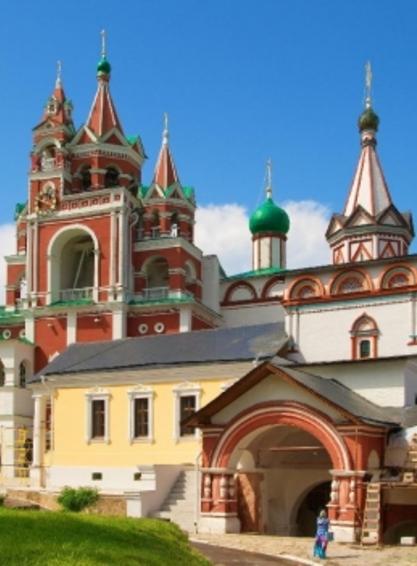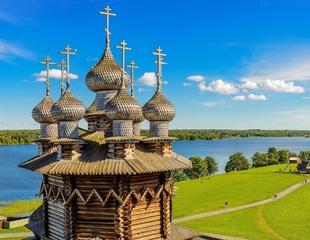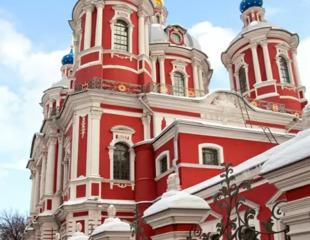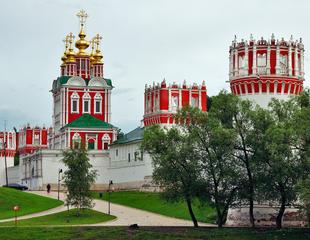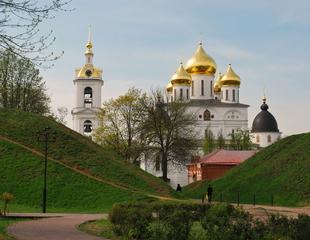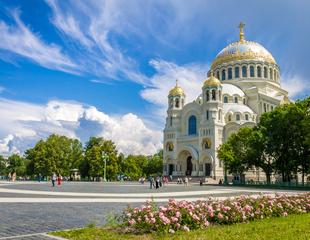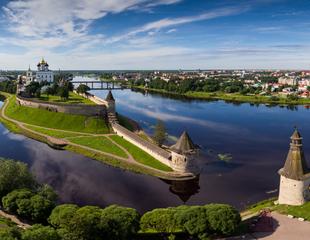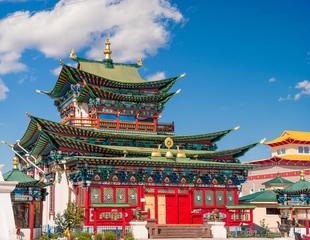The Savvino-Storozhevsky Monastery is an Orthodox monastery of the Moscow Diocese. The monastery is located on the Storozha Mount, at the confluence of the Storozhka River into the Moskva River, two kilometers west of the town of Zvenigorod, Moscow Region.
Historians say that Tsar Alexei Mikhailovich gave Savvino-Storozhevsky Monastery status of the first monastery of Russia, and only then the Kyiv-Pechersk Lavra and the Trinity- St. Sergius Monastery received the same status.
The monastery was founded in 1398 by monk Savva, a disciple of St. Sergius of Radonezh, at the instance and with the support of the Zvenigorod Prince Yuri Dimitrievich. At first, there was built a wooden church of the Nativity of the Blessed Virgin Mary. For his privacy, Sawa dug a cave, where he spent time in prayer. At first, the area of the monastery was small, but over time the number of monks increased, and the territory of the monastery increased significantly. In the XV-XVII centuries, the Savvino-Storozhevsky Monastery executed as a military outpost in the west of the Moscow Principality.
The monastery was a favorite place of prayer for many Russian tsars. It was in particular visited by Ivan IV the Terrible, his wife Anastasia Romanovna, and their son Theodore Ivanovich. During the reign of Tsar Alexei Mikhailovich, the monastery became a suburban royal residence. There were built the palace of the sovereign and the tsar’s chambers. At the same time, the monastery was surrounded by stone walls. The churches of the monastery were painted by the painters of the Kremlin Armory.
During the Patriotic War of 1812, the Russian shrines — the Vladimir and Iberian Icons of the Mother of God — were taken from the monastery for public prayer for the protection of the Russian land. The monastery, occupied by the French, was not ransacked: according to a legend, St. Savva appeared before the French commander Eugene de Beauharnais and told him not to touch the monastery.
In 1919, the monastery was closed. In 1941, during the evacuation, a unique 35-ton Great Bell pictured on the arms of Zvenigorod was destroyed. According to witnesses, the sound of the bell went even to Moscow. At the beginning of the XXI century, the bell was replaced by the equally massive one. Today the monastery numbers 50 residents. Over the last years, the iconostasis of the XVII century and frescoes were restored.
The architectural ensemble of the monastery consists of the Cathedral of the Nativity of the Virgin, the refectory complex with a belfry, the Top of the Gate Tower Church of the Trinity, Tsarina's Chambers, the Monks’ house, the residential building of religious schools, the Palace of Tsar Alexei Mikhailovich, the Observation deck, the Fence with towers and Cells of the XIX century. The architectural complex of the Savvino-Storozhevsky Monastery is typical for Russian architecture of the middle and the 2nd half of the XVII century. Remaking of the heritage of the Old Russian, Belarusian, Ukrainian, and Western European architecture, the emergence of new forms and effective compositions of buildings, a variety of decorative ornaments, and borrowing of techniques from folk wooden architecture are the characteristic features of Russian architecture of that time, embodied in the architecture of the Savvino-Storozhevsky Monastery.
